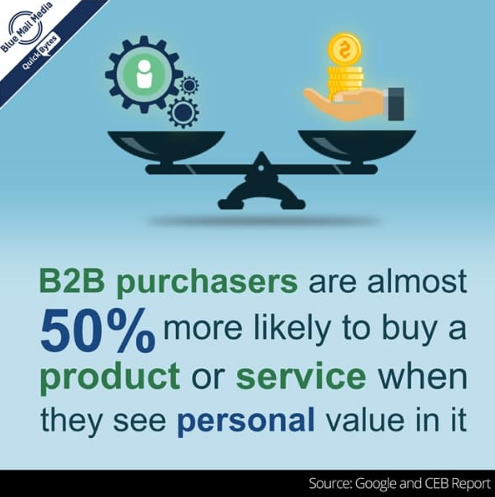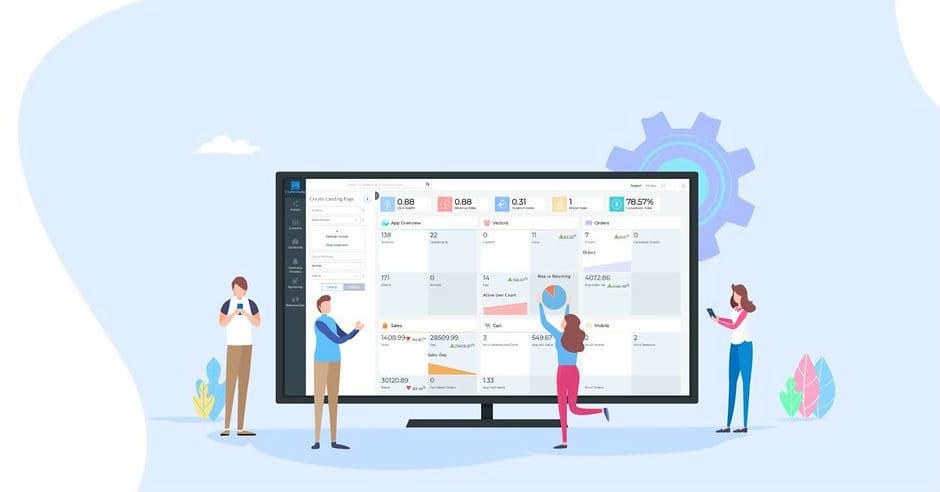As a B2B marketer, you may face a lot of challenges in the lead generation process. The sales procedure of your products and services are bit complex compared to what others do in a B2C environment. It takes longer to close the deal and always consists of multiple decision makers. Also, to convince these decision makers to enter the lead generation funnel, you should guide them well and persuade them to talk to your sales team. For this to happen, you need to follow various online marketing practices that can effectively sell the content on the website.
Maintaining a well-built site with optimized landing pages can be your savior in these scenarios. Now, if you are wondering how to optimize the pages of your website, worry not. In this article, we will cover some of the essential steps you should take to build a conversion-friendly landing page.
1. Understand the Purpose
“Without goals, and plans to reach them, you are like a ship that has set sail with no destination.” ~ Fitzhugh Dodson
This quote explains everything! If you are planning to design a perfect landing page for your website, you must have a clear and achievable goal. And, that goal must influence various aspects of the page such as content, call-to-action, and design. Make sure you have a single intention behind setting up a page. For instance, the primary objective of your landing page can be:
- Driving more traffic
- Convincing prospects to sign up for the newsletter or consultation
- Create maximum conversions
Having more than one goal will not only confuse the website visitors but also effects the page performance.
2. Pick a Simple Layout
We are creating a B2B landing page, and the conversion process in this market is totally different. Asking the prospects to buy your products or services will not help you in this marketing world. Instead, give them a compelling reason to visit your website and learn more about your brand. They always prefer quick explanations as well as answers to their queries. Therefore, keep your page design simple.
A convincing headline, easy-to-understand content, some bullet points, short lead form, relevant visuals, and call-to-action are more than adequate to please the B2B buyers. If you make your content too long or use generic photos as space fillers, you will most likely lose the visitors and also the chances of converting them into leads.
3. Focus on Every Element
As mentioned above, keep only a few elements in your landing page. It’s not an entire website; it’s just a page with a single purpose. Let us see what those elements are and how to use it appropriately.
- Headline: Use a simple headline which is short, clear, and relevant. It should be convincing enough to persuade the visitors to click on the CTA or fill the lead form. A short line with big, bold, and colored letters placed at the center-of-the-page will work best for any landing page.
- Copy: The landing-page content should always follow the sole intent. You can use simple statements, bullet points, and attention-grabbing text to engage the users. Also, you can create multiple version of your landing pages for different users. That is, visitors with less knowledge of your brand may require separate copy than the regular customer.
- Media: Make use of visual contents such as images, videos, and gifs to keep your users engaged and enhance their experience.
- Offer: You can come up with some proposals that are relevant to your prospects and lure them to buy from you.
- Call-to-action: Use short and direct call-to-action (CTA) buttons on your page.
4. Give Importance to Benefits and Not Features

Mentioning your product feature is necessary, but showcasing only them in the entire landing page will not influence the B2B buyers as you expect. Instead, tell them what they can get by availing your product, or how it makes their life better. Use some bullet points to convey the information clearly. The pages which focus solely on benefits more than features always convert well.
5. Thank the Visitors
Although it’s not so easy to please the B2B buyers, they will definitely feel delighted when you can fulfill their expectations. Be polite, and show them how you treasure their presence on your website. Thank them when they sign-up for your newsletters, fill any form or meet your landing page objective. Later, you can direct them to the other relevant pages or ask them to take the next step. It can include:
- Sharing a free e-book, case study, or other resources that might interest them.
- Inviting them to partake in any of your events.
- Asking them to learn more about your brand by following on social media.
- Offering a digital gift card, free subscription (for a few days), or so.
6. Include Social Proof
Try to display the positive reviews about your brand on the landing page. This simple texts testifying the helpfulness of your products or the prominence of your service will boost the conversion rate rapidly.
- Social media: You might find some of the positive feedback about your company on social media. Embedding these tweets, or comments on your landing page will lend your brand required integrity.
- Case studies or statistics: You can also use some short quotes from case studies or add statistics about the current users to convince prospects that you are no lesser than any competitor.
- Authority badges: Try including trust badges such as customer logos, awards from other websites, and more to build brand worth.
- Testimonials: Provide a review (also a direct quote) from a satisfied customer along with their full name, headshot, and business, title as this makes the testimony more credible.
- Third-party seals: If possible, include some most recognizable logos such as PayPal, McAfee, and VeriSign which let the users know that doing business with you is safe.
7. Use Traffic Source
After building the landing page with the essential elements, it’s time to identify the best sources of traffic to your website that is capable of producing more conversions. Some of the potential sources may include the following:
- Organic search
- Email marketing
- Paid search
- Display Ads
- Remarketing
- Traditional media (Print/Signage/Television/Radio)
- Word-of-mouth
- Online communities
8. Take Help of Landing Page Builders
If you are unable to create the page as expected, worry not because there are specific third-party platforms that help you build the easiest and most affordable landing pages. These tools can create, launch as well as manage the pages effectively. They offer a simple development environment such as “drag and drop” features that help even a beginner to create a compelling design. Besides, some firms also provide an option to integrate with other services, such as Google Analytics to make your task simpler.
9. Perform A/B Testing
A/B testing (also known as bucket testing or split testing) is used to compare the performance of any web page or app. So, how to test your landing pages using this experiment? It’s simple. Create two entirely different versions of your page, divide the traffic between them, and learn which performs better. Try to make only one modification at a time to test what works for your niche. We advise you not to check multiple changes simultaneously, as it is challenging to recognize which change created a difference. Headline, content, visuals (images and videos), form, and call-to-action are some of the key elements to test on any landing page.
10. Measure the Performance
Creating a landing page and running ads to drive more traffic is not the end of this marketing game. You should also focus on some metrics to measure the outcome of it. Some standard metrics every B2B companies can use are:
- Users: Total number of users visited the landing page.
- Source: The source or channel that has generated the traffic.
- Conversion rate: Percentage of users completed the desired action.
- Abandonment rate: Number of people started filling out the form but stopped in between the process.
- Cost-per-conversion: Calculate how much does each conversion cost.
- Lead-to-customer rate: Measure how many leads it takes to generate a customer.
- Cost-per-customer: Based on the result of the cost-per-conversion and lead-to-customer rate, calculate how much it costs to produce a customer.
To Sum It Up
So, now you know how a properly optimized landing page can help you enjoy a higher conversion rate. So, we advise you not to make the mistake that so many B2B marketers do while designing the website. Don’t use generic contents or images to fill the blank space. For the sake of driving more traffic to your site or reach the landing page objective, follow the steps mentioned in this blog. It can significantly boost the conversion rate.

